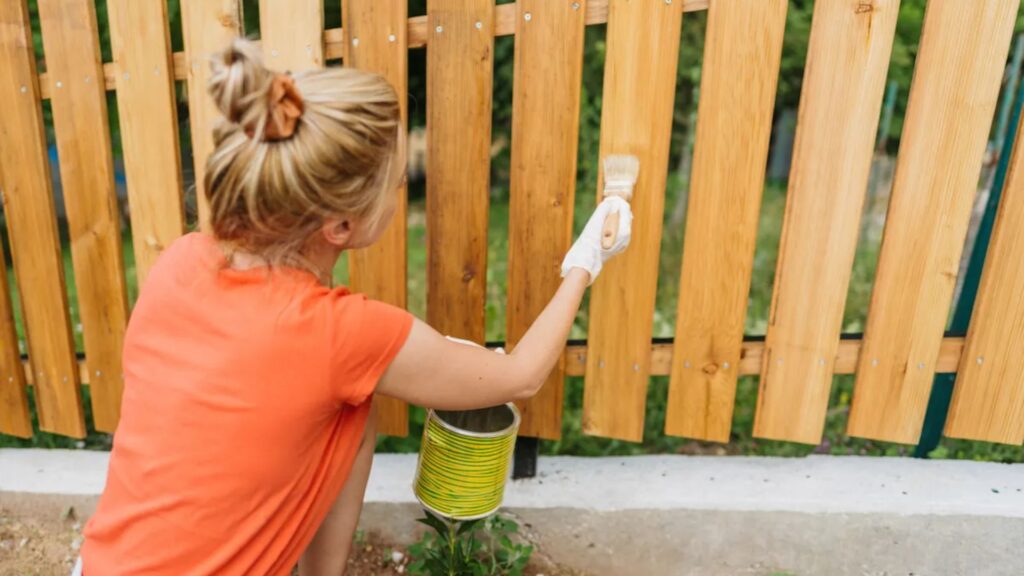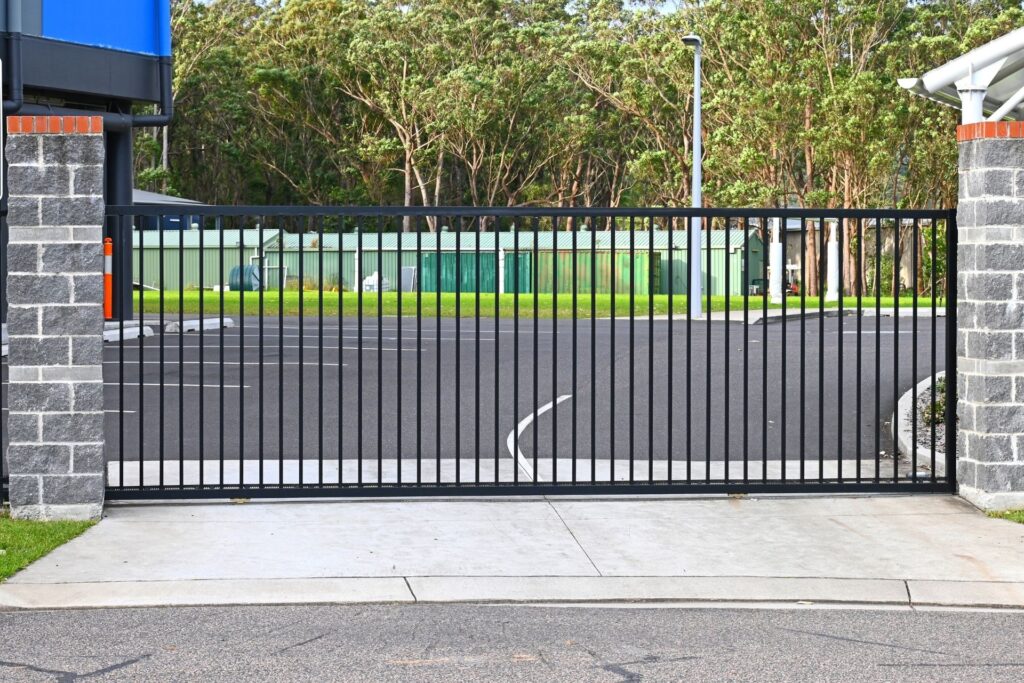Welcome to your go-to guide for answering the common question: “Can I paint my side of my neighbor’s fence?” If you’re looking to add a personal touch to your outdoor space but aren’t sure where the legal and social boundaries lie, you’re in the right place. Fences, often shared or straddling property lines, can be a source of confusion and sometimes even tension between neighbors. In this post, we’ll explore the essential things you need to know—from understanding fence ownership and legal considerations, to navigating neighborly relations, and practical tips for painting. By the end, you’ll have a clear understanding of whether you can legally paint your side of the fence and how to go about it in a way that keeps the peace with your neighbors.
Yes, you can paint your side of your neighbor’s fence, but only with their permission. Fences are typically owned by one party or shared between neighbors, so it’s important to determine ownership before making any changes. Always communicate with your neighbor, check local laws, and ensure that any alterations you make do not damage the fence or violate any property agreements.
Table of Contents
Understanding Fence Ownership And Property Boundaries
Understanding fence ownership and property boundaries is essential for homeowners to avoid disputes and ensure they comply with local regulations. Whether you’re building a new fence or addressing an existing one, it’s important to know who owns the fence, where the boundaries lie, and what responsibilities come with that ownership. Below, we’ll explore the details of determining fence ownership, resolving property boundary issues, and navigating the relevant laws.
Defining Fence Ownership
The first step in managing any fence-related issue is understanding who owns the fence. Ownership can vary depending on your location, and the rules around it are determined by the local government, homeowners’ association, or other regulatory bodies. The fence could belong to you, your neighbor, or both of you if it’s a shared structure. Generally, in some places, the fence’s ownership is determined by which side of the property it’s on, or by who paid for its installation.
For example, in some areas, if the “good” or finished side of the fence faces your neighbor’s property, you might own it. In other regions, the placement might not matter as much as the legal agreements made during the property purchase. Understanding these rules is crucial to avoid legal complications or misunderstandings with neighbors. If you’re unsure of local laws, it’s always best to consult your local council or homeowners’ association guidelines.
How to Determine Fence Ownership
Determining fence ownership can seem complicated, but there are several ways to clarify it. Here are practical steps to help you identify who owns the fence:
1. Check Property Deeds: The most reliable source of information regarding fence ownership is your property deed. These legal documents often include details about property boundaries and fences. You can typically obtain this information from the land registry office or online resources in your country.
2. Talk to Your Neighbors: Sometimes, simply talking to your neighbor can resolve ownership questions. They may have insights from previous owners or their own deeds. Clear communication can help prevent future disputes.
3. Consult Local Regulations: Local laws or ordinances may have specific guidelines about fence ownership and maintenance responsibilities. If you’re uncertain, contacting your local council or a real estate attorney can clarify any rules you need to follow.
By taking these steps, you’ll have a clearer understanding of who is responsible for maintaining or replacing the fence.
Fence Placement on Boundaries
Fences placed on property boundaries can lead to a shared responsibility between neighbors, which sometimes creates confusion about maintenance and ownership. In many areas, if the fence sits directly on the boundary line, both parties might have rights to the structure. This means decisions about repair or replacement may need to be made together, with costs split evenly.
However, if the fence is entirely on one side of the boundary, the owner of that side typically holds full responsibility for maintenance and repairs. Local laws may vary, so it’s essential to check the boundary fence rules in your area.
When fences straddle a property line, both property owners may need to agree on any changes, including painting, replacing, or moving the fence. Without a mutual understanding, these situations can lead to property boundary disputes. To avoid these conflicts, it’s advisable to get a professional survey done if there’s uncertainty about the exact boundary lines. A surveyor can provide a precise map of your property and clearly define where the fence should or currently stands.
Common Keywords and Search Phrases
To ensure this article is easily found online, it’s important to incorporate common search phrases like:
- “fence ownership rules“
- “boundary fence laws“
- “property boundary disputes“
These keywords can help homeowners and property managers searching for advice on navigating fence ownership and property boundaries find the right information.
Fence ownership and property boundaries can be a tricky subject, but by understanding the rules in your area and taking proactive steps, you can avoid disputes and ensure your property is well-maintained. Whether it’s through checking deeds, talking to neighbors, or consulting local regulations, having a clear understanding of your responsibilities will help keep things running smoothly. Always remember, clear communication and legal knowledge are key to resolving any fence-related issues effectively.
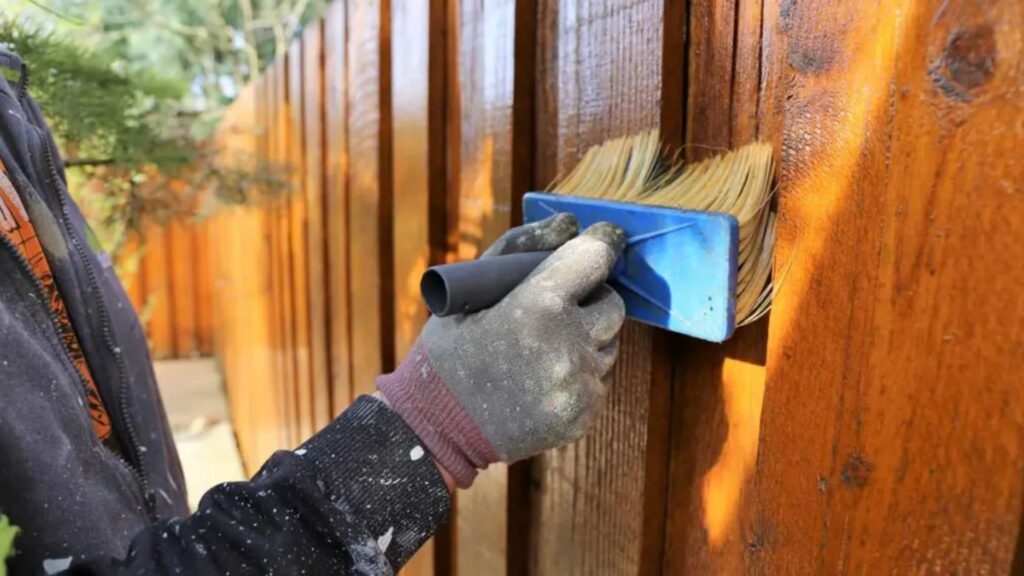
Can You Legally Paint Your Side Of The Fence?
Owning a home often brings questions about boundaries and property rights, especially when it comes to shared or adjoining fences. If you’re wondering whether you can legally paint your side of a fence that stands between your property and your neighbor’s, it’s important to understand the relevant laws and best practices to avoid disputes. Below, we’ll break down the key considerations you should keep in mind before grabbing that paintbrush.
General Legal Rules
When it comes to fences, general property law typically dictates that you cannot alter or modify property that does not belong to you. This rule applies even if the fence in question borders your yard and you only intend to paint the side facing your property. The key point here is ownership. If the fence is solely your neighbor’s property, then any changes—like painting or staining—are subject to their approval.
Laws about fences and property boundaries can vary greatly depending on your location. For example, in some places, neighbors are equally responsible for the maintenance of shared fences. In such cases, it might be easier to argue for the right to paint your side. However, without ownership or joint ownership of the fence, making changes unilaterally could lead to legal issues. Always start by understanding who actually owns the fence before making any decisions.
Local Laws and Ordinances
Before making any alterations, it’s essential to check your local laws and ordinances. Many municipalities have specific rules regarding fences, particularly shared or boundary fences. These regulations could include stipulations on the height, color, and maintenance responsibilities. In some areas, altering a fence without proper approval can result in fines or other penalties.
To avoid trouble, reach out to local authorities or consult with a legal expert to clarify what’s permissible in your area. This step will not only help you avoid legal pitfalls but also ensure you stay on the right side of your community’s regulations. A quick call to your city or town’s planning office can give you a clear understanding of what is and isn’t allowed regarding fence painting.
Permission from Your Neighbor
Even if you believe you have the right to paint your side of the fence, obtaining permission from your neighbor is a smart move. A fence that divides two properties often plays a key role in maintaining good neighborly relations. While the law may provide some guidance, relationships can be complicated, and taking the time to communicate with your neighbor shows respect.
Ask your neighbor directly whether they’re comfortable with your plans to paint your side of the fence. If they agree, make sure you get that permission in writing to avoid any future disputes. Written consent could come in handy if questions arise later about whether or not you had their approval. On the other hand, if your neighbor disagrees, it’s usually best to honor their wishes or negotiate a compromise to avoid souring your relationship.
Potential Consequences
What happens if you paint the fence without your neighbor’s permission? The consequences could range from minor to significant, depending on local laws and how your neighbor reacts. Potential outcomes include:
- Legal Disputes: Your neighbor could file a legal complaint, especially if they believe the fence is solely theirs. In this case, you could be forced to go to court to resolve the issue.
- Fines: Local regulations might include fines for making alterations to a fence without proper approval, particularly if the fence is governed by community or municipal rules.
- Removal of Paint: If it’s determined that you’ve painted the fence illegally, you could be required to remove the paint and restore the fence to its original condition, which could involve additional costs.
In short, it’s not worth the risk to paint your side of the fence without ensuring you’re in the clear legally and have your neighbor’s consent. Taking the time to verify local regulations and talk to your neighbor upfront can save you from future headaches and expenses.
Painting your side of a shared fence might seem like a small, harmless project, but it’s important to approach it thoughtfully. By understanding property law, checking local ordinances, and getting your neighbor’s permission, you can avoid potential legal issues and maintain good relations. Taking these steps ensures that your project is smooth, legal, and stress-free.
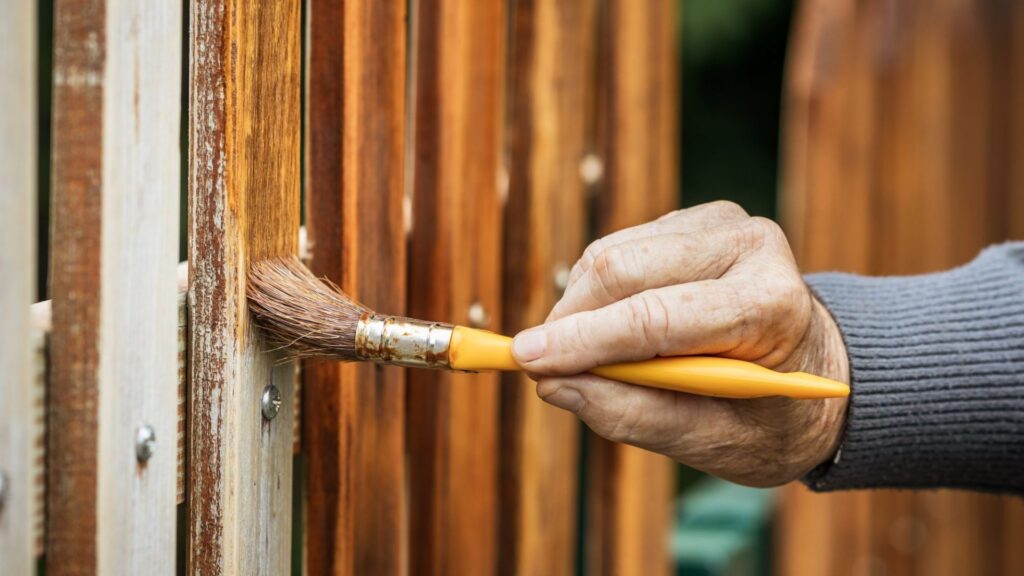
Social Considerations: Neighbor Relationships Matter
When it comes to home improvement projects, especially those involving shared spaces like fences, maintaining a positive relationship with your neighbors is essential. Your approach to the situation can significantly influence the outcome, whether you’re planning to paint, repair, or modify the fence. Here’s how you can navigate these waters smoothly while considering social dynamics and maintaining neighborly harmony.
Communication is Key
One of the most crucial factors in keeping peace with your neighbors is open communication. Before making any changes to your side of the fence, take the time to inform your neighbor. A simple heads-up can prevent misunderstandings and build trust. By being transparent about your intentions, you show respect for their property and their input.
Approach your neighbor with a friendly, positive attitude. For example, start the conversation with something like, “Hey, I’ve been thinking about freshening up my side of the fence with a new coat of paint. Would you be okay with that?” This sets a cooperative tone and opens the door for a productive discussion.
Not only does this proactive communication foster goodwill, but it also helps prevent any surprises that could lead to disputes. Addressing the topic before any work begins shows that you value their opinion, which can go a long way in building a stronger neighbor relationship.
How to Approach the Conversation
It’s normal to feel a bit awkward about bringing up changes that might affect your neighbor, but a polite and respectful approach can make all the difference. When starting the conversation, timing is key. Try to choose a time when your neighbor seems relaxed and available, and avoid starting the conversation when tensions are high, such as after a long day or during a busy moment.
When speaking to your neighbor, be clear and concise about your plans. A sample script could be something like: “I’ve been planning to paint my side of the fence to match the new landscaping in my yard. I wanted to run this by you to see if you’re comfortable with it.” This way, you’re opening up for dialogue while also subtly sharing that you’re prepared to compromise if needed.
Compromises
If your neighbor expresses concerns about your plans, it’s important to remain flexible. Offer potential compromises to show that you’re willing to work together. For example, suggest painting both sides of the fence or choosing a neutral color that complements both properties. Not only does this show goodwill, but it also strengthens your relationship and ensures that both parties are satisfied with the outcome.
Another option could be to share the cost or labor if your neighbor is concerned about the appearance of the fence. By offering to paint both sides, you’re going above and beyond to maintain harmony, which will likely be appreciated.
Handling Neighbor Disputes
Unfortunately, not all neighbors will agree with your plans, and disputes can arise. If your neighbor refuses to give consent, it’s essential to handle the situation with tact and patience. First, try to revisit the conversation and explore further compromises. Perhaps there’s a middle ground that can satisfy both sides—such as selecting a color that meets both aesthetic preferences.
If your neighbor remains unyielding, you have a few options. Depending on local regulations, you may have the right to paint your side of the fence without permission. However, it’s important to consider whether moving forward without their approval could strain your relationship in the long run.
In more severe cases, if the dispute escalates and legal action becomes necessary, you might need to consult a lawyer or mediator who specializes in property or neighbor disputes. But before heading down that path, weigh the cost and stress of legal intervention against simply leaving the fence as-is. Sometimes, maintaining peace in the neighborhood might outweigh your initial desire for change.
Building a strong relationship with your neighbor is crucial when undertaking projects like fence painting. Open communication, the willingness to compromise, and addressing disputes with a calm, respectful approach can help you avoid unnecessary conflict and maintain a peaceful, friendly relationship.
By understanding the importance of dialogue and compromise, you can navigate potential conflicts smoothly. Keywords like “how to talk to your neighbor about fence painting,” “neighbor fence disputes,” and “neighbor relations” highlight the significance of approaching these discussions carefully to maintain neighborly peace.
In the end, fostering a positive relationship with your neighbor will not only make your home improvement projects easier but also contribute to a more harmonious living environment for years to come.

Practical Tips For Painting Your Side Of The Fence
Painting your side of the fence can be a rewarding DIY project that not only improves the appearance of your yard but also helps preserve the integrity of your fence. Whether you’re looking to add a fresh coat of color or simply maintain the wood, here are some essential tips to ensure your painting project goes smoothly and achieves long-lasting results.
Preparation is Everything
Before picking up a paintbrush, proper preparation is crucial. Skipping this step can lead to uneven paint coverage, a shorter lifespan for the paint job, and possible damage to the fence over time.
1. Clean the Surface: Start by thoroughly cleaning your fence. Over time, fences accumulate dirt, mildew, and debris that can prevent the paint from adhering properly. Use a stiff brush or power washer to remove any buildup. If the fence has mold or mildew, consider using a solution of water and mild bleach to kill any organic growth.
2. Check for Damage: Inspect the fence for any signs of damage, such as rot, loose boards, or splinters. Repair any broken or warped areas before painting. It’s essential to sand any rough areas and fill in gaps or cracks with wood filler to ensure a smooth surface.
3. Choose the Right Paint: Select a high-quality outdoor weatherproof paint, ideally formulated for fences. These paints are designed to withstand harsh weather conditions, resist fading, and protect the wood from moisture. Opt for neutral colors that blend well with the surrounding environment, or if you’re going for a bold look, ensure the color complements your home and landscaping.
By dedicating time to proper preparation, you’ll ensure that your fence is not only visually appealing but also better protected against the elements, extending its lifespan.
Choosing the Right Paint
Selecting the right paint for your fence is a critical step that can impact both the aesthetic and durability of your project. Here are some factors to consider when choosing the best paint for fences:
1. Weather Conditions: The climate in your area plays a significant role in paint performance. For example, if you live in a region with heavy rainfall or high humidity, opt for a waterproof or moisture-resistant paint. On the other hand, if your area experiences extreme sun exposure, a UV-resistant paint will prevent fading.
2. Wood Type: Not all wood reacts to paint in the same way. Softer woods like cedar or pine may require a primer to prevent the paint from soaking in too deeply, while hardwoods often hold paint better but may still need sanding for proper adhesion. Knowing your fence material will help you choose the right type of paint or stain.
3. Complement Your Yard: Consider how the color of the fence will look alongside the rest of your yard. Neutral tones like beige, white, or gray tend to be popular choices because they blend seamlessly into most landscapes. However, if you want your fence to stand out, bold colors can make a statement—just be sure it harmonizes with your home’s exterior.
Taking these factors into account ensures that the paint you choose will not only look great but also hold up against weather conditions and wear over time.
DIY vs. Hiring Professionals
When it comes to painting your fence, you may wonder whether it’s better to tackle the project yourself or hire professional painters. Let’s weigh the pros and cons of each option:
1. DIY Fence Painting
- Pros: If you enjoy hands-on projects, painting your fence can be a cost-effective and satisfying way to improve your home’s curb appeal. You have complete control over the process, from choosing the paint to deciding on the method of application. Plus, with the right preparation and tools, most homeowners can achieve professional-looking results.
- Cons: Fence painting is time-consuming and requires significant preparation, especially if your fence is large or in poor condition. You’ll need to invest in quality brushes, rollers, and potentially a paint sprayer. Additionally, if you make mistakes, such as uneven application or paint splatter, correcting them can be difficult and expensive.
2. Hiring Professionals
- Pros: Hiring professional painters ensures the job is done efficiently and to a high standard. Professionals have the expertise to handle any challenges, such as uneven surfaces or tricky weather conditions, and they have access to professional-grade tools that can make a difference in the final result. Hiring someone also saves you time and effort.
- Cons: The main downside of hiring professionals is the cost. While it eliminates the hassle, professional painting services can be pricey, especially for large fences. Additionally, you may have less control over the timing and outcome of the project.
In short, if you have the time, patience, and tools, DIY fence painting can be a rewarding and affordable option. However, if you’re looking for convenience and a flawless finish, hiring professionals might be the better choice.
Preserving the Fence’s Integrity
Once your fence is painted, maintaining its condition is key to ensuring it looks great and lasts for years to come. Here are a few practical tips to preserve the integrity of your fence, especially when painting your side:
1. Protect Your Neighbor’s Side: If your fence is shared with a neighbor, take extra care to protect their side from any paint splatters or damage. You can use painter’s tape or plastic sheeting along the top of the fence to ensure the paint doesn’t accidentally drip onto their property. Open communication with your neighbor about the project can also go a long way in maintaining a good relationship.
2. Regular Maintenance: Even after painting, your fence will require some ongoing maintenance. Inspect it regularly for signs of wear, peeling paint, or damage. Touch up any areas as needed to prevent moisture from penetrating the wood, which can cause rot and deterioration.
3. Consider a Sealant: After the paint has dried, applying a weatherproof sealant can offer additional protection, particularly in areas prone to harsh weather conditions. This sealant creates a barrier that prevents moisture from seeping into the wood, prolonging the life of both the paint job and the fence itself.
By following these tips, you’ll keep your fence looking fresh and protect it from the elements, ensuring it remains in excellent condition for years to come.
Painting your side of the fence is a worthwhile project that can transform your yard’s look while protecting your wooden fence from the elements. Whether you decide to go the DIY route or hire professionals, the key to success lies in preparation, selecting the right paint, and ongoing maintenance. Following these practical tips will help you achieve a long-lasting and beautiful result.
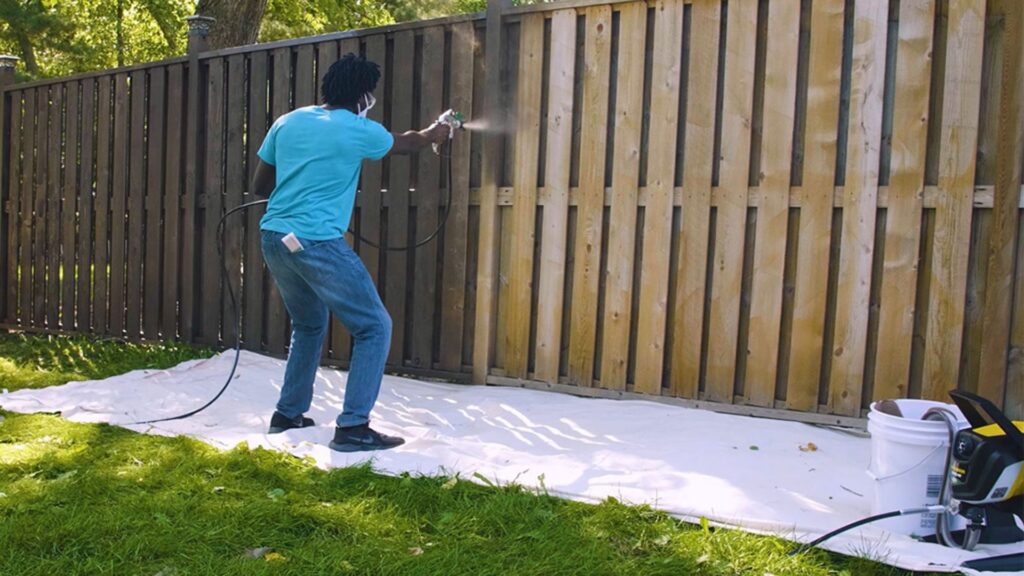
Alternatives To Painting Your Neighbor’s Fence
When it comes to altering the appearance of a shared or neighboring fence, painting might not always be the best or even a possible solution. Whether you’re looking to enhance privacy, improve the look of your yard, or simply add a personal touch, there are plenty of alternatives to painting your neighbor’s fence that can achieve stunning results without creating tension or overstepping boundaries. Below are some creative, practical alternatives to consider.
1. Decorative Solutions: Personalizing Your Side of the Fence
If you’re unable to paint the fence due to ownership rules or neighborly agreements, there are still many ways to make it feel like your own. Decorative solutions allow you to personalize your yard while respecting the existing structure. Consider the following ideas:
- Hang Outdoor Decorations: Think about attaching weather-resistant artwork, such as metal or wooden designs, to your side of the fence. These pieces can add character and charm without permanently altering the fence. Wind chimes, birdhouses, or even solar-powered lights can create a cozy, inviting atmosphere.
- Install Plants or Trellises: Using nature to decorate is both beautiful and practical. Attach trellises or plant climbing vines like ivy, jasmine, or roses. These plants will gradually cover the fence, giving it a lush, green appearance that can blend seamlessly with your garden. For instant impact, consider hanging planters filled with vibrant flowers or greenery.
- Put Up a Privacy Screen: Privacy screens are a simple, non-permanent way to add both style and seclusion. Available in various materials, such as bamboo, latticework, or even fabric, these screens can be positioned in front of the fence on your property, offering a decorative barrier that enhances your space without altering the fence itself.
By using these decorative solutions, you can achieve the look you desire while respecting the fence’s ownership.
2. Planting Hedges or Bushes: A Natural Barrier
Another excellent alternative to painting your neighbor’s fence is to incorporate landscaping elements like hedges or bushes. This approach not only improves the aesthetic appeal of your yard but also provides added privacy.
- Enhancing Privacy: Certain shrubs and hedges grow tall and thick, creating a natural screen that can block the view from both sides. Varieties like boxwood, privet, or holly make for excellent privacy hedges. Plus, as they mature, they provide a more permanent and green solution compared to a simple painted fence.
- Adding Curb Appeal: Well-maintained hedges and shrubs add an elegant touch to any yard. They can soften the appearance of a fence and blend it into the natural environment, making your outdoor space feel more inviting and serene.
- Low Maintenance: Many hedge plants are relatively easy to care for, needing only occasional pruning to maintain their shape and density. This makes them a practical, long-term alternative to the upkeep of a painted fence.
Choosing to plant hedges or bushes is a sustainable way to enhance your yard’s beauty while solving any concerns related to the fence’s appearance.
3. Installing Your Own Fence: Full Control Over Aesthetics
If you’re looking for full control over the design and appearance of a fence, installing your own fence on your property might be the best solution. Although this requires more planning and investment, it offers a long-term fix that lets you customize the style, color, and materials without needing anyone else’s permission.
- Cost Considerations: While installing a new fence can be an investment, it’s essential to weigh the cost against the benefits of total creative freedom. The materials you choose—whether it’s wood, vinyl, metal, or composite—will affect the overall cost. Additionally, consider the long-term savings from not having to negotiate changes with a neighbor.
- Design Flexibility: By installing your own fence, you can pick a design that complements your home and landscape perfectly. Whether you prefer a modern, minimalist look or a classic picket fence, the choice is entirely yours. You can also paint or stain the fence any color you want, ensuring it fits seamlessly into your vision for your yard.
- Enhanced Privacy and Security: Besides aesthetics, installing your own fence offers practical benefits like improved privacy and security. Depending on the height and style, a well-built fence can shield your yard from prying eyes, reduce noise, and offer a safer environment for children and pets.
For those willing to invest the time and money, building your own fence provides the ultimate control and satisfaction.
Painting your neighbor’s fence might not always be feasible, but these alternatives offer plenty of ways to enhance your outdoor space. Whether you opt for decorative solutions, landscaping, or installing your own fence, each option provides unique benefits and allows you to personalize your yard without infringing on shared boundaries. By choosing the right approach for your needs, you can create a beautiful, private, and functional outdoor area that reflects your personal style.

FAQs: About Can I Paint My Side Of My Neighbours Fence
Can I legally paint my side of my neighbor’s fence?
Legally, you can only paint your side of the fence if you have permission from the owner of the fence, whether that’s your neighbor or shared ownership. It’s important to check local property laws and communicate openly with your neighbor before proceeding.
How can I find out who owns the fence between my property and my neighbor’s?
Fence ownership is typically outlined in the property deeds or boundary agreements. You can check these documents or contact your local authority to determine who owns the fence. If the fence is exactly on the boundary, ownership may be shared.
What happens if I paint my neighbor’s fence without permission?
Painting your neighbor’s fence without permission could lead to disputes and legal consequences, including potential fines or demands to restore the fence to its original state. It’s best to avoid conflicts by seeking permission first.
What should I do if my neighbor refuses to let me paint my side of the fence?
If your neighbor refuses, it’s important to respect their decision. Consider alternative options like decorating your side of the fence with plants, hanging outdoor décor, or installing a privacy screen to achieve the look you want without altering the fence.
Can I paint both sides of the fence if I get permission?
Yes, if you have permission from your neighbor, you can paint both sides of the fence. It’s always best to agree on the color and type of paint to avoid any future disagreements.
Are there alternatives to painting my side of the fence?
Yes, if painting isn’t an option, consider alternatives like hanging decorations, using a trellis with climbing plants, or installing a second fence or screen on your property. These solutions add privacy and personal flair without altering your neighbor’s fence.
What type of paint should I use on an outdoor fence?
For outdoor fences, use weatherproof or exterior-grade paint designed to withstand the elements. Choose a color that complements your yard and, ideally, one that won’t cause tension with your neighbor.
Can I attach things like plants or décor to my neighbor’s fence?
Attaching items like plants, lights, or decorations to your neighbor’s fence without permission can be a violation of their property rights. Always ask for consent before making any modifications to a fence that isn’t solely yours.
How do I approach my neighbor about painting the fence?
Approach your neighbor in a friendly, non-confrontational manner. Explain why you’d like to paint your side of the fence and how it will enhance your space. Be open to compromise, such as choosing a neutral color or offering to paint both sides if they agree.
What if my neighbor paints their side of the fence a color I don’t like?
Unfortunately, if the fence belongs to your neighbor, they have the right to paint their side as they see fit. However, you can have a conversation with them to discuss mutual preferences or find ways to minimize its impact on your side, such as installing plants or screens to obscure the view.
Conclusion
In conclusion, understanding fence ownership and the legalities surrounding it is essential when considering whether you can paint your side of the fence. It’s crucial to get permission from your neighbor and maintain open, respectful communication to avoid potential disputes. Taking the time to check local regulations will also ensure you stay compliant with any neighborhood or municipal rules regarding fence painting laws. Once you’ve gathered all the necessary information, you can proceed confidently with your project. Don’t hesitate to discuss your experiences or ask questions in the comments, and explore our other content on fence care and backyard improvements. Remember, maintaining good neighborly relations is just as important as enhancing your property. For more details, explore topics like “can I paint my side of the fence” or “neighbor fence painting laws.”
About the Author:
Mike Veail is a recognized digital marketing expert with over 6 years of experience in helping tradespeople and small businesses thrive online. A former quantity surveyor, Mike combines deep industry knowledge with hands-on expertise in SEO and Google Ads. His marketing strategies are tailored to the specific needs of the trades sector, helping businesses increase visibility and generate more leads through proven, ethical methods.
Mike has successfully partnered with numerous companies, establishing a track record of delivering measurable results. His work has been featured across various platforms that showcase his expertise in lead generation and online marketing for the trades sector.
Learn more about Mike's experience and services at https://theleadguy.online or follow him on social media:

